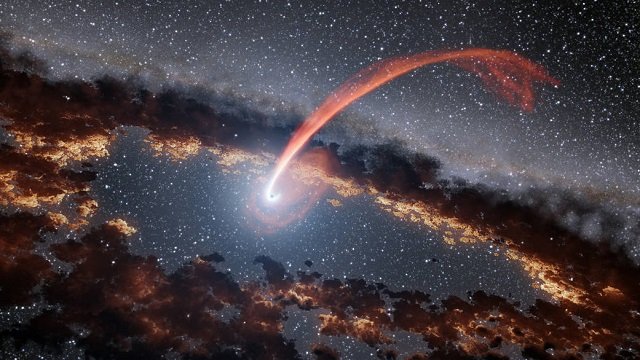
When a star passes within a supermassive black hole, it will be tidally disrupted. The disruption can produce a sudden gas injection close to the black hole horizon and generate an electromagnetic flare.
Previously, researchers have discovered these flares a number of times, but the methods only provide inaccurate observations of these events.
In a new study published in The Astrophysical Journal, scientists reported a new method to observe stars eaten by a black hole.
They used images from the Wide-field Infrared Survey Explorer (WISE), a NASA infrared-wavelength astronomical space telescope. The telescope was launched in December 2009.
WISE performed an all-sky astronomical survey with images in 3.4, 4.6, 12, and 22 μm wavelength rand bands, over ten months using a 40 cm diameter infrared telescope in Earth orbit. It also supported the discovery of the first Y Dwarf and Earth Trojan asteroid, and tens of thousands of new asteroids.
In the study, researchers discovered transient 3.4 μm emission from several previously known tidal disruption flares. They claimed that nuclear dust was heated to its sublimation temperature due to the intense radiation of the tidal flare.
Based on the break in the infrared light curve, researchers inferred that the hot dust was located 0.1 parsec from the supermassive black hole. Parsec is a unit of length used to measure large distances to objects outside the Solar System. One parsec is equal to about 3.26 light-years (i.e. 19 trillion miles).
Because the dust has been heated by absorbing ultraviolet light and soft X-ray photons of the flare, researchers could estimate the bolometric flare luminosity by reprocessing the light curve.
For the flare PTF-09ge, they inferred the most likely value of the luminosity integrated over frequencies is 8 × 1044 erg s−1, with uncertainties due to the unknown temperature of the dust. This luminosity is 9 times larger than previous observations.
Researchers suggest that this is an early scientific exploration of the dust in the nuclei of non-active galaxies on sub-parsec scales. The observed infrared luminosity implies the importance of the nuclear dust in the host galaxies.
Citation: van Velzen S, et al. (2016). Discovery of transient infrared emission from dust heated by stellar tidal disruption flares. The Astrophysical Journal, 829: 19. doi:10.3847/0004-637X/829/1/19.
Figure legend: This Knowridge.com image is credited to NASA/JPL-Caltech.



